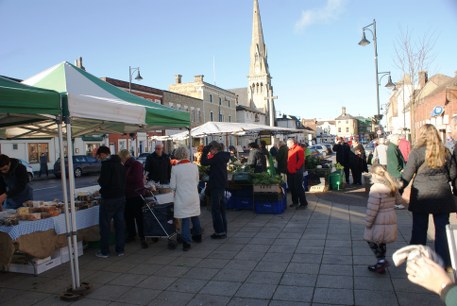
The Bridge, Markets and Fairs
A town began to grow up in the area between the old Saxon village and the new Priory. The town took its name from St Ivo, although it was later discovered that the bones were more likely to have been those of a rich Roman farmer.
The monks of Ramsey Abbey, who owned the new town, took steps to increase its prosperity. They built a bridge over the river and received royal charters that gave them permission to hold markets and fairs. The original wooden bridge was replaced by a stone one in the 1400s, which still stands. It is famous for its bridge chapel, built onto the bridge in the middle of the river.
The fairs and markets continue to this day. Every Monday and Friday Market Hill is filled with a bustling street market, with especially big markets held on Bank Holiday Mondays. We also now enjoy a Farmers’ Market every first and third Saturday of the month. Every October the town centre is given over to the Michaelmas Fair, a tradition that reaches back for hundreds of years.